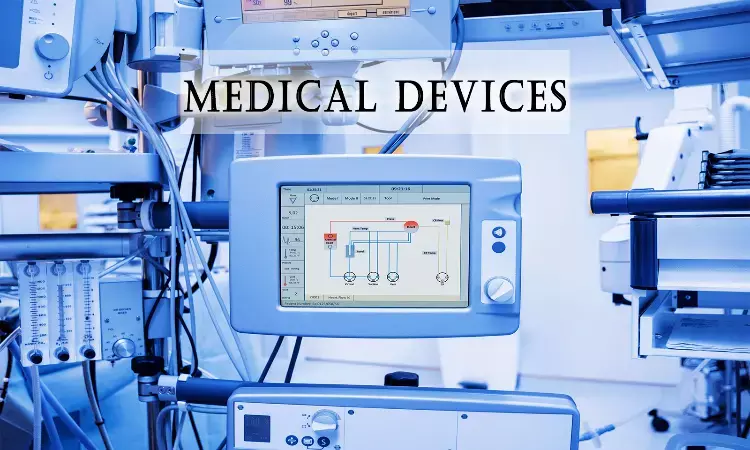- Home
- Medical news & Guidelines
- Anesthesiology
- Cardiology and CTVS
- Critical Care
- Dentistry
- Dermatology
- Diabetes and Endocrinology
- ENT
- Gastroenterology
- Medicine
- Nephrology
- Neurology
- Obstretics-Gynaecology
- Oncology
- Ophthalmology
- Orthopaedics
- Pediatrics-Neonatology
- Psychiatry
- Pulmonology
- Radiology
- Surgery
- Urology
- Laboratory Medicine
- Diet
- Nursing
- Paramedical
- Physiotherapy
- Health news
- Fact Check
- Bone Health Fact Check
- Brain Health Fact Check
- Cancer Related Fact Check
- Child Care Fact Check
- Dental and oral health fact check
- Diabetes and metabolic health fact check
- Diet and Nutrition Fact Check
- Eye and ENT Care Fact Check
- Fitness fact check
- Gut health fact check
- Heart health fact check
- Kidney health fact check
- Medical education fact check
- Men's health fact check
- Respiratory fact check
- Skin and hair care fact check
- Vaccine and Immunization fact check
- Women's health fact check
- AYUSH
- State News
- Andaman and Nicobar Islands
- Andhra Pradesh
- Arunachal Pradesh
- Assam
- Bihar
- Chandigarh
- Chattisgarh
- Dadra and Nagar Haveli
- Daman and Diu
- Delhi
- Goa
- Gujarat
- Haryana
- Himachal Pradesh
- Jammu & Kashmir
- Jharkhand
- Karnataka
- Kerala
- Ladakh
- Lakshadweep
- Madhya Pradesh
- Maharashtra
- Manipur
- Meghalaya
- Mizoram
- Nagaland
- Odisha
- Puducherry
- Punjab
- Rajasthan
- Sikkim
- Tamil Nadu
- Telangana
- Tripura
- Uttar Pradesh
- Uttrakhand
- West Bengal
- Medical Education
- Industry
WHO releases list of priority medical devices for diabetes, cardiovascular diseases management, Details

New Delhi: In order to aid policymakers and health-care providers in prioritizing the selection and procurement of medical devices for cardiovascular diseases and diabetes, the World Health Organization (WHO) has released a list of priority medical devices for the management of these health conditions.
The list includes more than 500 devices that are required at all levels of the health system, from primary care facilities to highly specialized hospitals, and devices needed for health emergencies such as cardiac arrest, stroke and hypo or hyperglycemic emergencies.
The new list provides clinical guidelines for specific conditions, describes the relevant interventions required (e.g. hospitalization, cardiac surgery, intensive care, laboratory testing and medical imaging) and subsequently lists all the medical equipment required such as surgical instrument sets, personal protective equipment, and diagnostic and treatment devices.
The ultimate aim of this new list is to help health-care providers implement interventions that are essential for the detection and management of heart conditions and diabetes across the continuum of care, leading to fewer hospitalizations and deaths and the saving of precious health resources.
Non-communicable diseases (NCDs) – which include cardiovascular diseases and diabetes – represent 74% of global annual deaths and are responsible for more than 15 million people dying prematurely each year between the ages of 30 and 69. Low- and middle-income countries bear 85% of the burden of these premature deaths, largely because they lack the testing and monitoring equipment needed to screen for, diagnose and treat NCDs.
Along with the list, WHO has developed MeDevIS, a medical devices information system and clearing house where biomedical engineers, public policy-makers and hospital managers can find more information on specific medical devices, their use and how to look after them. The site currently lists 1500 devices and will continue to be updated for other diseases and health conditions.
The list released, dated 30th June, 2021, is part of a series of lists prioritizing devices for high-burden diseases, including cancer and COVID-19. These lists are based on the best available evidence about the essential medical devices countries need to prevent, diagnose and treat disease. They should be adapted to national contexts and used to update or develop national lists. Ultimately, the lists are meant to help countries increase the availability and appropriate use of medical devices and to promote access to better quality health services.
The full set of lists are the global reference for countries to develop or update their national lists for public procurement and reimbursement of devices for screening, diagnosis and treatment of disease. They also help them to ensure value for money and ultimately to increase access.
To view the list, click on the link below:


